
Ernst Werner Siemens was a German electrical engineer, inventor and industrialist. Siemens's name has been adopted as the SI unit of electrical conductance, the siemens. He founded the electrical and telecommunications conglomerate Siemens and invented the electric tram, trolley bus, electric locomotive and electric elevator.
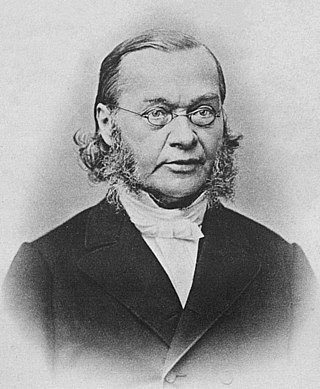
Ernst Wilhelm Theodor Herrmann Hengstenberg, was a German Lutheran churchman and neo-Lutheran theologian from an old and important Dortmund family.
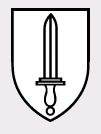
The Coburger Convent der akademischen Landsmannschaften und Turnerschaften is an association of 100 German and Austrian Studentenverbindungen, all of which are based on the principle of tolerance. Its full name is Coburger Convent der Landsmannschaften and Turnerschaften an deutschen Hochschulen.
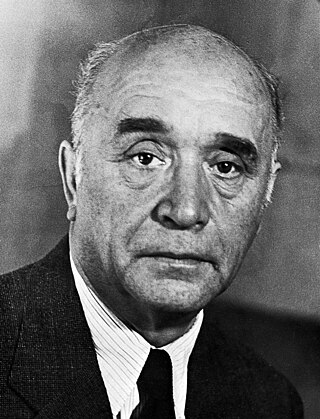
Friedrich Karl Rudolf Bergius was a German chemist known for the Bergius process for producing synthetic fuel from coal, Nobel Prize in Chemistry in recognition of contributions to the invention and development of chemical high-pressure methods. Having worked with IG Farben during World War II, his citizenship came into question following the war, causing him to ultimately flee to Argentina, where he acted as adviser to the Ministry of Industry.

LinuxTag was an annual Free and Open Source Software (FOSS) conference and exposition with an emphasis on Linux but also BSD descendants located in Germany. The name is a compound with the German Tag meaning "Day", as it was initially a single day conference, but soon extended to multiple days, then always including a weekend. LinuxTag was the world's largest FLOSS conference and exhibition for years and aimed to provide a comprehensive overview of the Linux and Free Software market as well to promote contacts between users and developers. With this broad approach LinuxTag was one of the most important events of this kind.

Johannes Wilhelm "Hans" Goldschmidt was a German chemist notable as the discoverer of the Thermite reaction. He was also co-owner of the Chemische Fabrik Th. Goldschmidt, as of 1911 Th. Goldschmidt AG and its most important chemist. The reaction, also called the Goldschmidt process, is used for thermite welding, often used to join railway tracks. Thermites have also been used in metal refining, disabling munitions, and in incendiary weapons. Some thermite-like mixtures are used as pyrotechnic initiators in fireworks.
Adolf of Altena, Adolf of Berg or Adolf of Cologne, was Archbishop of Cologne from 1193 to 1205.

Rudolf Goldschmidt (1876–1950) was a German engineer and inventor, best known for the development of the Goldschmidt alternator radio transmitter, and the tone wheel receiver.
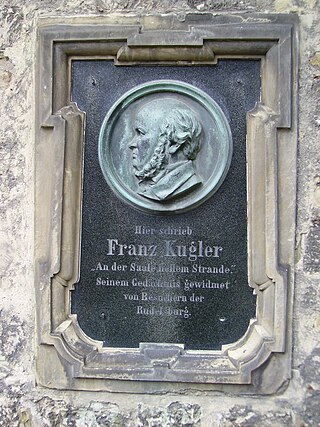
Franz Theodor Kugler was an art historian and cultural administrator for the Prussian state. He was the father of historian Bernhard von Kugler (1837-1898).
Theodor Wilhelm Braune was a German philologist and Germanist.

Nikodem Caro was an industrial chemist and entrepreneur. Caro was born in Łódź, and studied chemistry in Berlin at the Royal Technical College of Charlottenburg and got his doctorate from Rostock University. From 1895 on he worked in the Deutsche Dynamit AG with Adolph Frank on the development of calcium cyanamide as a means of fixing nitrogen, hence the Frank-Caro process. Caro became an important figure in the nitrogen fixation industry and a rival of Fritz Haber.
Geheimrat Leopold Koppel was a German banker and entrepreneur. He founded the private banking house Koppel und Co., the industrial firms Auergesellschaft and OSRAM, and the philanthropic foundation the Koppel-Stiftung. He was a Senator in the Kaiser-Wilhelm-Gesellschaft. An endowment he made in 1911 resulted in the founding of the Kaiser-Wilhelm Institut für physikalische Chemie und Elektrochemie, and endowments from him led to the founding of and support of the Kaiser-Wilhelm Institut für Physik. As a Jew, he was a target of the Third Reich’s policy of Arisierung – the Aryanization of German businesses, which began in 1933.
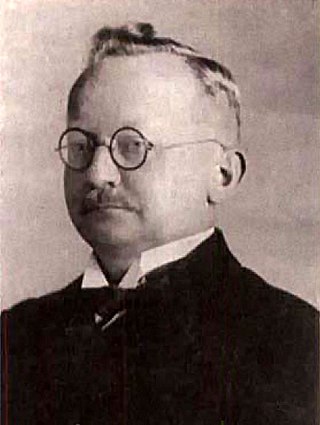
Paul Alwin Mittasch was a German chemist and scientific historian of Sorbian descent. He is well known by his pioneering and systematic research in the development of catalysts for the industrial ammonia synthesis using the Haber–Bosch process.
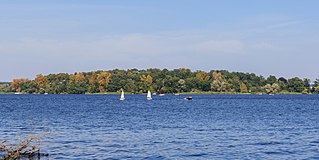
Schwanenwerder is an island in the locality of Nikolassee in southwestern Berlin, located in a wider stretch of the Havel close to the eastern bank and adjacent to the Großer Wannsee to the south of it. The neighbourhood is considered an affluent residential area and was home to known people such as Alexander Parvus, Joseph Goebbels, Gustav Fröhlich, Ernst Udet, and Axel Springer.

Carl Wilhelm Bernhard Scheibler was a German chemist. Scheibler's research focused on sugar, including the technical chemistry of sugar production and the composition of molasses.

Wilhelm Alfons Schuler was a chemist, inventor and entrepreneur in the second half of the 20th century.

The Lübeck Martyrs were three Roman Catholic priests – Johannes Prassek, Eduard Müller and Hermann Lange – and the Evangelical-Lutheran pastor Karl Friedrich Stellbrink. All four were executed by beheading on 10 November 1943 less than 3 minutes apart from each other at Hamburg's Holstenglacis Prison. Eyewitnesses reported that the blood of the four clergymen literally ran together on the guillotine and on the floor. This impressed contemporaries as a symbol of the ecumenical character of the men's work and witness. That interpretation is supported by their last letters from prison, and statements they themselves made during their time of suffering, torture and imprisonment. "We are like brothers," Hermann Lange said.
Events in the year 1897 in Germany.

Franz Friedrich Theodor Fleitmann was a German chemist and entrepreneur.
Karl Ludwig Reimer was a German chemist and industrialist, specifically for the chemical compound Vanillin.















